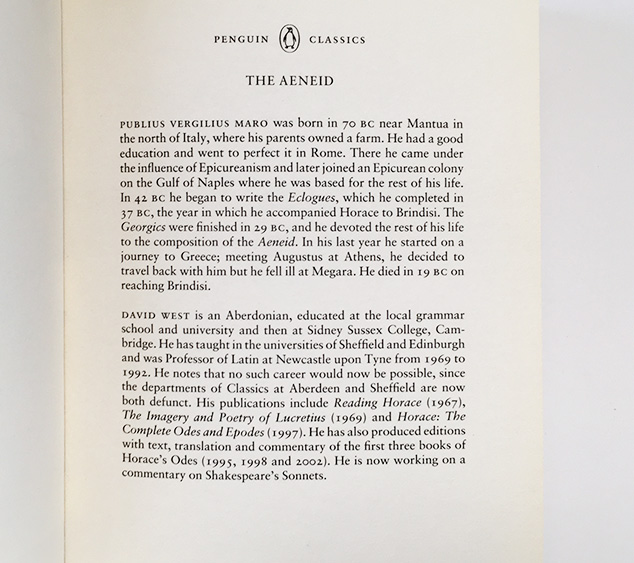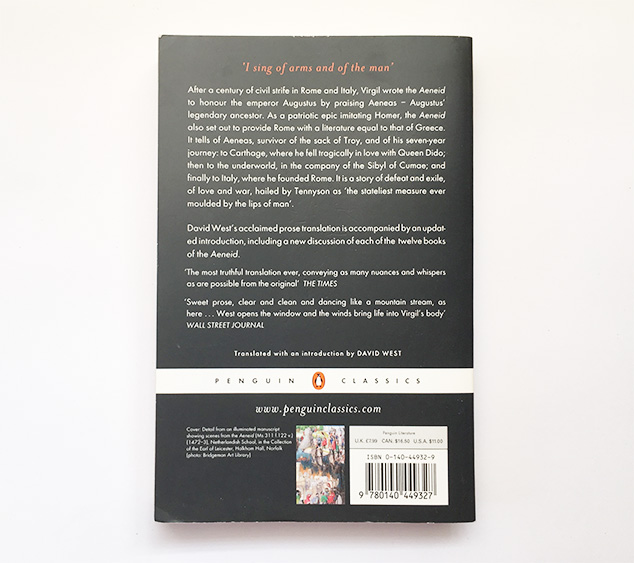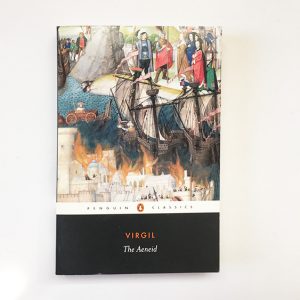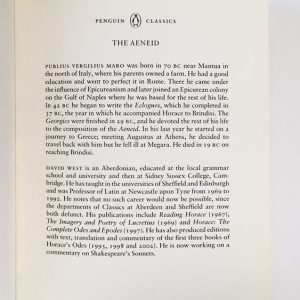The Aeneid
After a century of civil strife in Rome and Italy, Virgil wrote the Aeneid to honour the emperor Augustus by praising Aeneos – Augustus’ legendary ancestor. As a patriotic epic imitating Homer, the Aeneid also set out to provide Rome with a literature equal to that of Greece. It tells of Aeneas a survivor of the sack of Troy, and of his seven-year journey: to Carthage, where he fell tragically in love with Queen Dido; then to the underworld, in the company of the Sibyl of Cumael and finally to Italy, where he founded Rome. It is a story of defeat and exile, of love and war, hailed by Tennyson as ‘the stateliest measure ever moulded by the lips of man.’
Rp120,000.00
Last piece
Aeneid, Latin epic poem written from about 30 to 19 BCE by the Roman poet Virgil. Composed in hexameters, about 60 lines of which were left unfinished at his death, the Aeneid incorporates the various legends of Aeneas and makes him the founder of Roman greatness. The work is organized into 12 books that relate the story of the legendary founding of Lavinium (parent town of Alba Longa and of Rome). The town is founded by Aeneas, who was informed as he left the burning ruins of Troy that it was his fate to found a new city with a glorious destiny in the West.
Homer was Virgil’s model. The story of Aeneas’s journey, recounted in the first six books, is patterned after the Odyssey, with many imitative passages and even direct translations, while the description of the war in the last six books abounds with incidents modeled after those in the Iliad. More basically, however, Virgil made use of another model, Rome’s own national legend about the war fought under Romulus against the Sabines. This legend preserves, in a historical disguise, an original Indo-European myth about a conflict between the gods of sovereignty and war and the gods of fecundity, ending with the unification of the two divine races. In Virgil’s development of this theme, Aeneas and the Etruscans can be seen as representing the gods of sovereignty and war, and the Latins as representing the gods of fecundity.
Source: Britanica.com
| Weight | 200 kg |
|---|---|
| Language |














